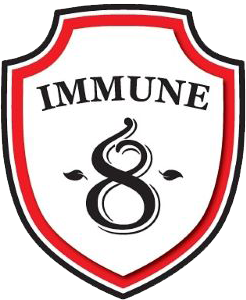Inquiring Minds Want to Know…About Essential Oils (EO)
What is an essential oil? Essential oil is derived from a plant, flower, or tree through different forms of extraction. Essential oils have dated back to the Egyptians 4500BC. It is the chemistry of the plant that gives its valued properties, much like our genetic code.
This article is about everything you wanted to know about essential oils but maybe not too sure who to ask.
The strength or uses of essential oils come from the compounds or chemistry of the plant. I will state Chemistry 101 as simple as I can. We can start with the basics. Each oil is made up of atoms like all living things. There is a certain combination of atoms that give the oil its healing properties. They consist of: monoterpenes, sesquiterpenes (offer potent health benefits such as cleansing properties and the ability to support health), diterpenes, alcohol (cleaning properties), phenols (supports health and antioxidant), aldehydes key contributor to an essential oil’s overall fragrance profile), ketones (support health), Esters (calming and relaxing plus support health), oxides (promotes feelings of clear breathing).
“The chemical profile of essential oils is very complex containing up to hundreds of individual constituents. Studies have been conducted examining both the synergistic action of the whole oil as well as the individual action of isolated constituents. Besides understanding the chemical profile, these studies have verified that there is increased benefit and safety from using the whole oil, rather than just an individual constituent. In other words, oils are best used in their whole form—with the exact composition designed by nature —nothing added, removed, or isolated” (doTerra, online). This would be pure, 100% essential oils but no filler or synthetic components.
What parts of the plant are used for making the essential oil?
In the most common oils such as lavender, tea tree, patchouli, and peppermint are distilled, and the plant’s raw material is used. The raw material is the whole plant: flower, leaves, wood, bark, roots, seeds, or peel. I will give you a few examples of the variety of what part is used.
Leaves of the plant: lemon myrtle, violet, geranium, cinnamon, and eucalyptus.
Flower and leaves: basil, rosemary. sage, peppermint, oregano, lavender, and lemon balm.
Flower petals and buds: clove, ylang-ylang, jasmine, chamomile, and rose.
W00d: Rosewood and sandalwood
Tree bark: Cinnamon bark oil and cassia
Needles: Spruce, scotch pine, cypress, and fir oil
Grass oils: citronella, lemongrass, and palmarosa.
Resin oils: gum or balsam frankincense and myrrh.
Berries or fruit oils: allspice, black pepper, and juniper berry.
Rinds: Bergamot, orange, lemon, grapefruit, and lime
Roots: angelica, ginger, and vetiver
Seeds of the plants: anise, carrot, coffee bean, coriander, cumin, nutmeg, and parsley
What processes are used to obtain the essential oil?
The processing could be steam distilled or cold-pressed. Steam distillation is a process where heat and vapor are used to separate sensitive compounds like aromatics. Distilled water is used because it has no minerals and cannot add anything to the testing being conducted. Cold-pressed describes a process in which a steel press is used to extracted oil leaving in the flavor, aroma, and nutritional value. Essential oils are very concentrated. For example, it would take 3000 lemons to produce 15 ml of oil. You are getting the benefits from 3000 lemons in a very few drops. It would take 3 pounds of lavender to make 15 ml. Another example is rose oil. The distillation of 242,000 rose petals only produces 5 ml of oil. The therapeutic value is magnified and would need to be diluted.
Which brings me to the next step: how much essential oil do I use and for what reason?
Adults and children have different dilution rates. Adults should be 2% and children 1% of a carrier. The carrier can be oil, lotion, soap, or water. The adult strength is 12 drops to an ounce of a carrier. I have used essential oil blends for a variety of conditions such as mosquito bites, bugs around the house, cleaning the house, getting rid of odors, sleeping difficulties, leg cramps, headaches, and sunburn. There are endless applications for the use of essential oils.
Is there a difference between therapeutic or 100% pure essential oil?
There is no government regulation of the field of aromatherapy. Therefore, companies like doTerra have their labs that test for the certified pure therapeutic grade (CPTG). According to doTerra, they certify that there are no added fillers, synthetic ingredients, or harmful contaminants that would reduce efficacy. I wanted to know that the oils I use have the properties that the plant has been tested for and has no interference or harmful effects. The plant was grown without pesticides means certified organic.
I hope this covers any questions you may have had about essential oils. Have fun. Buy just a few oils and study on the uses before buying a whole case of different oils. Some can be quite expensive.
Essential oils promote health in the holistic and complementary fields. There are so many benefits to them. Most holistic practitioners use them in their practice to help relax the body and mind of the patient/client. I have put together a blend to enhance your healthy lifestyle. In addition, essential oils also have various health benefits such as relaxation, insect control, emotional help, and pain relief.
Immune 8 can protect with its blend of 8 essential oils, you can check out those benefits here https://immune8.com/immune-8-blend-and-beneficial-actions/
Essential oils are an easy way to boost your immune system and can help defend against virus and other germs, check out Immune8.com
To Your Health & Happiness!!
Margie
